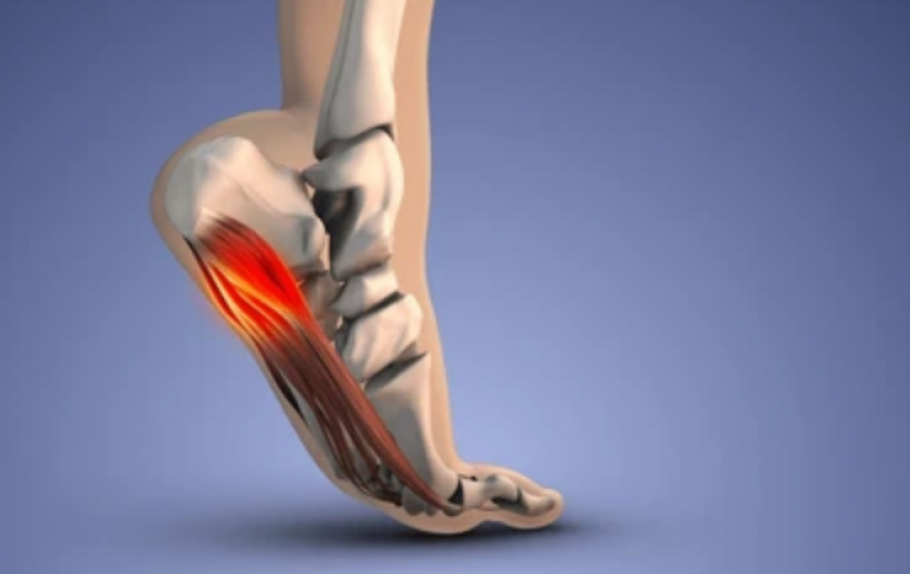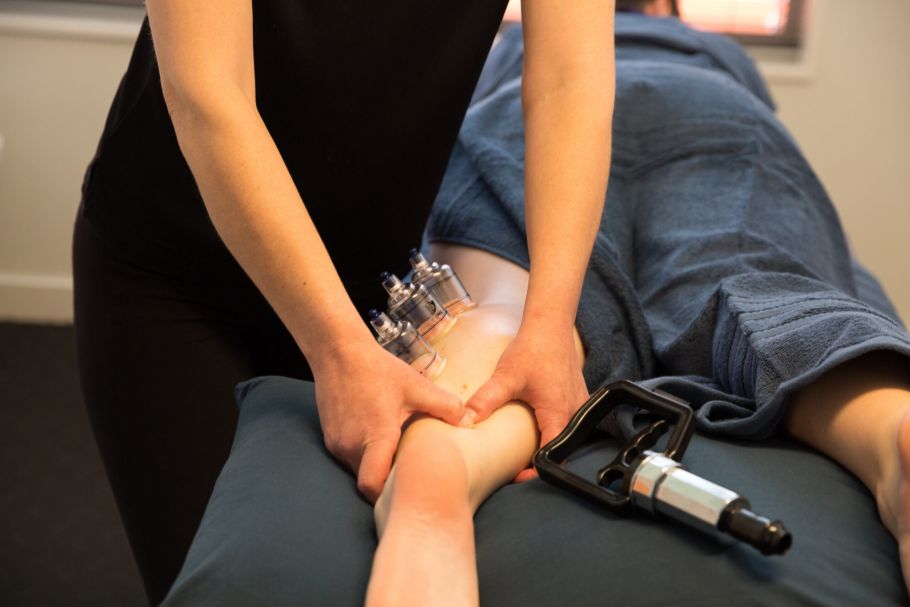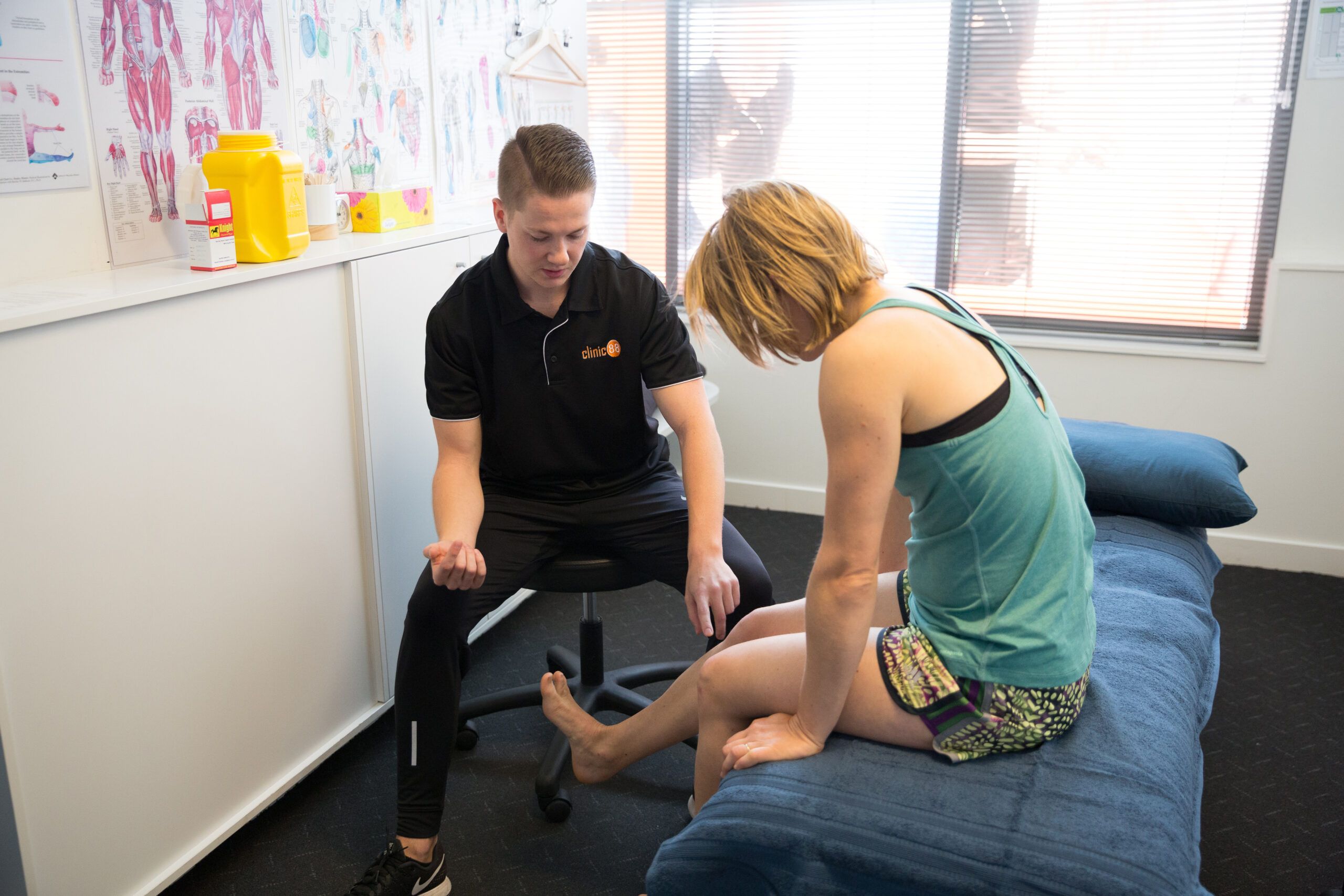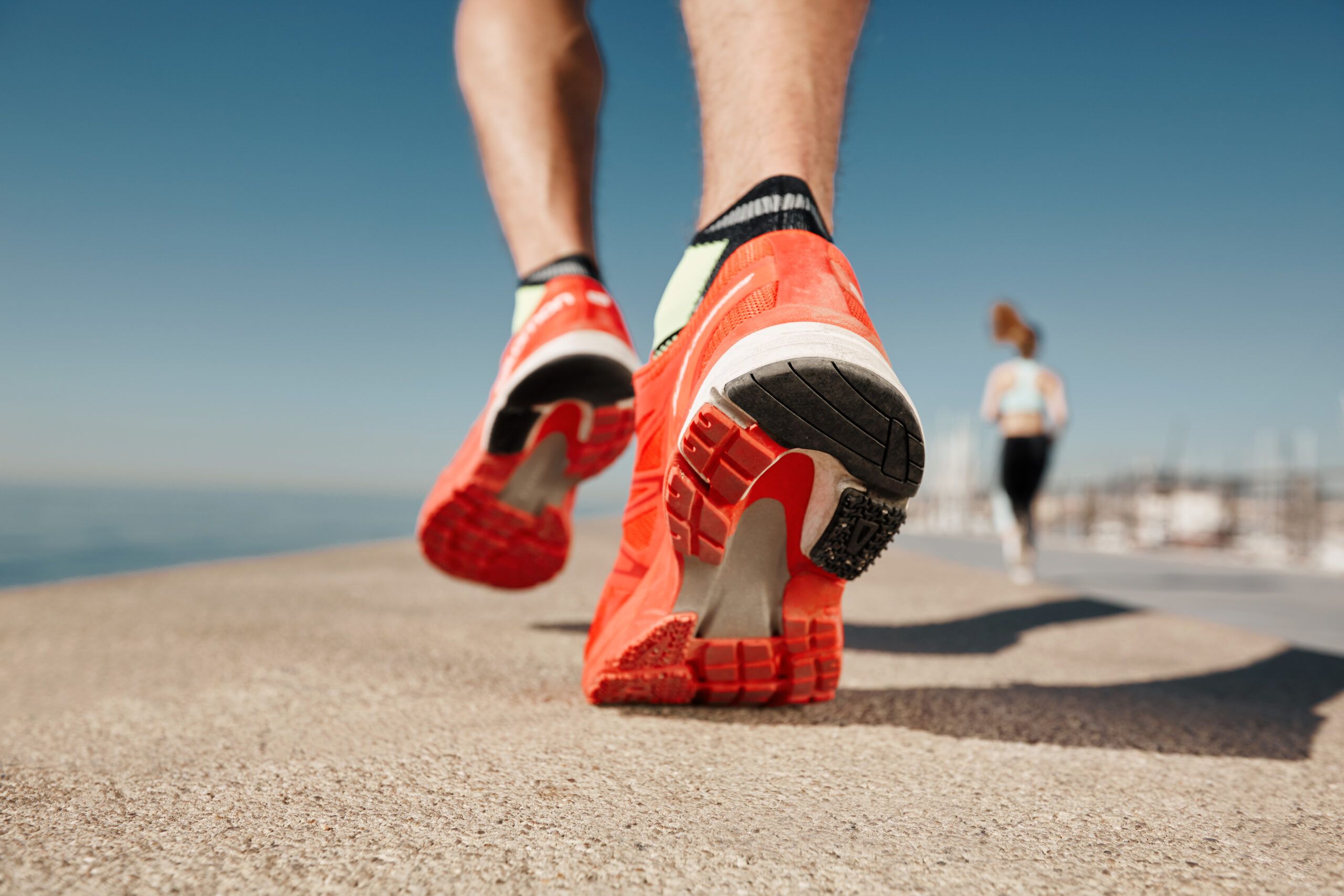
Plantar Fascia Pain Symptoms Summary
- Sharp Pain at the base of the heal
- Worse in the morning or after long periods of rest
- Can initially warm up with activity
- Can last weeks to months
Treatment Options Summary
- Taping
- Load Management
- Manual Therapy including Massage, Needling, foot mobilisation
- Exercise to strengthen the tissue for long term resolution
Symptoms -is this you?
Sharp or stabbing pain under the heel
- This is the most classic symptom. It’s often described as a knife-like pain that can make walking difficult.
Pain with the first steps in the morning
- Many people feel intense pain when they get out of bed and take their first few steps. This is due to the plantar fascia tightening overnight.
Pain after rest or inactivity
- The pain often returns after sitting or lying down for a while, especially when standing up again.
Improvement with movement (initially)
- The pain may ease slightly after walking for a few minutes, but can return with prolonged activity.
Worsening pain after long periods of standing or walking
- Especially on hard surfaces or in unsupportive footwear.
Tenderness at the front of the heel
- Pressing on the inside edge of the heel may reproduce the pain.
Tightness in the arch or calf
- Some people also feel tightness or pulling along the arch of the foot or in the calf muscles.
Limping or altered walking pattern
- To avoid pain, people may shift their weight or walk on their toes, which can lead to other issues.




What causes Plantar Fascia Pain?
- Overuse or Repetitive Activity
- Long-distance running or walking
- Standing for extended periods (e.g., in retail, hospitality, or healthcare jobs)
- Sudden increase in physical activity
- Poor Foot Mechanics
- Flat feet (pes planus): cause the arch to collapse, overstretching the fascia
- High arches: reduce shock absorption, increasing stress on the heel
- Abnormal gait: such as rolling the feet inward (overpronation)
- Inadequate Footwear
- Shoes with poor arch support or cushioning
- Wearing worn-out shoes or walking barefoot on hard surfaces
- Tight Muscles and Limited Flexibility
- Tight calf muscles or Achilles tendons can increase tension on the plantar fascia
- Limited ankle dorsiflexion (upward movement of the foot)
- Excess Body Weight
- Increases the load on the plantar fascia, especially during walking or standing
- Age and Degeneration
- Most common in people aged 40–60
- Age-related changes in tissue elasticity and healing capacity
- Occupational Risks
- Jobs that involve prolonged standing or walking on hard surfaces (e.g., teachers, nurses, factory workers)
- Athletes with excessive running loads
- Recreational athletes. Especially those that suddenly return to training or abruptly change their training.
- Other Medical Conditions or Health States
- Diabetes and arthritis may contribute to tissue changes or inflammation
- People on Statins
- Women experiencing hormonal changes (menopause / peri menopause)
How do we treat Plantar Fascia Issues?
Be careful not to fall into the trap of all plantar fascia pain is the same. It’s not! There are different stages, different types, other sources of pain about the heal. All this information needs to be assessed before launching into a rehab program. Depending on the type of heal pain you are experiencing, these are the treatment options
Manual Therapy
Manual therapy provides short-term relief and prepares the foot for more active rehabilitation. Techniques may include:
- Soft Tissue Therapy: Reduces tension in the plantar fascia, calf, and foot muscles.
- Myofascial release: Targets fascial restrictions in the arch , heel and calf complexes
- Joint mobilisation: Improves mobility in the ankle and subtalar joints.
- Dry needling: Releases trigger points in the calf and foot.
- Taping (e.g., low-dye taping): Supports the arch and reduces load on the plantar fascia during activity
Exercise Therapy
Exercise is the cornerstone of long-term recovery. Your therapist will prescribe a tailored program that may include (depending on your phase or type of plantar fascia pain):
- Plantar fascia-specific stretches (e.g., toe extension stretch)
- Calf and Achilles tendon stretches
Foot strengthening exercises (e.g., towel scrunches, toe curls) - Calf strengthening exercises
- Balance and proprioception training to improve foot control
- Footwear
- Guidance on supportive footwear with proper arch support and cushioning
- Referral for custom orthotics if needed to correct biomechanical issues that don’t respond to manual therapy or exercise
- Education and Activity Modification
- Advice on load management: how to stay active without aggravating symptoms
- Strategies to avoid prolonged standing or walking on hard surfaces
- Education on biomechanics and posture to reduce recurrence
Adjunct Therapies
- Shockwave therapy (for chronic cases)
- PRP injections for cases that are not responding

Frequently Asked Questions
What is plantar fascia pain?
It’s pain caused by irritation or damage to the plantar fascia—a thick band of tissue that supports the arch of your foot.
What does plantar fasciitis feel like?
Most people describe a sharp or stabbing pain under the heel, especially with the first steps in the morning or after rest.
What causes plantar fascia pain?
Common causes include overuse, poor footwear, flat feet, tight calf muscles, or sudden increases in activity.
Is plantar fasciitis the same as a heel spur?
Not exactly. A heel spur is a bony growth that may develop due to chronic plantar fascia stress, but it doesn’t always cause pain.
Who is most at risk?
Runners, people who stand for long periods, those with flat feet or high arches, and people who are overweight are at higher risk.
How is it diagnosed?
Diagnosis is usually based on symptoms and a physical exam. Imaging like X-rays or ultrasounds may be used if another cause is suspected.
Is plantar fasciitis always caused by inflammation?
Not always. Chronic cases often involve tissue degeneration rather than inflammation, which is why some experts prefer the term “plantar fasciopathy.”
Can plantar fasciitis go away on its own?
Yes, many cases improve with rest, stretching, and proper footwear, but it can take weeks or months.
What treatments are available?
Treatments include stretching, manual therapy, orthotics, pain relief, shockwave therapy, and in rare cases, surgery.
What kind of stretches help?
Calf stretches and plantar fascia stretches are most effective—especially when done first thing in the morning.
Is exercise good or bad for plantar fasciitis?
Exercise is essential for recovery, but high-impact activities should be avoided until symptoms improve.
Should I stop walking or running?
You may need to reduce or modify activity temporarily. Low-impact options like swimming or cycling are better during recovery.
What shoes should I wear?
Supportive shoes with good arch support and cushioning are best. Avoid flat shoes or walking barefoot.
Do I need orthotics?
Custom or over-the-counter orthotics can help support your arch and reduce strain on the plantar fascia.
Can manual therapy help?
Yes. Techniques like massage, joint mobilisation, and taping can relieve symptoms and improve mobility.
What if the pain doesn’t go away?
If symptoms persist beyond 3–6 months, your Therapist may recommend imaging, shockwave therapy, or a referral to a specialist.
Is surgery ever needed?
Surgery is rare and only considered after 6–12 months of unsuccessful conservative treatment.
Can plantar fasciitis come back?
Yes, especially if the underlying causes (like poor footwear or overuse) aren’t addressed.
Is it safe to stretch if it hurts?
Gentle stretching is usually safe and helpful. If pain increases, reduce the intensity and consult a health professional.
How long does it take to heal?
Most people recover within 6–12 weeks, but chronic cases may take several months